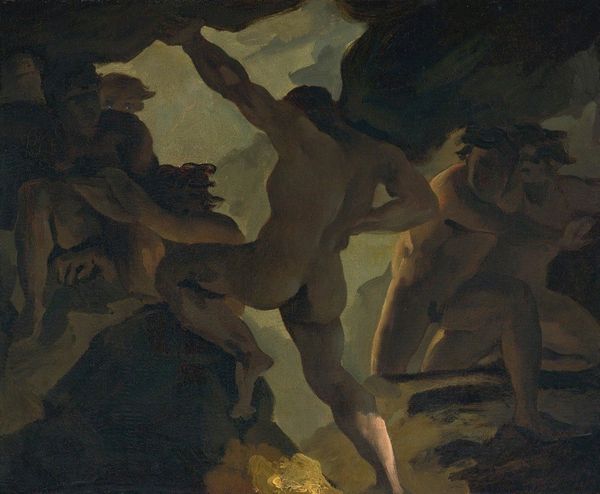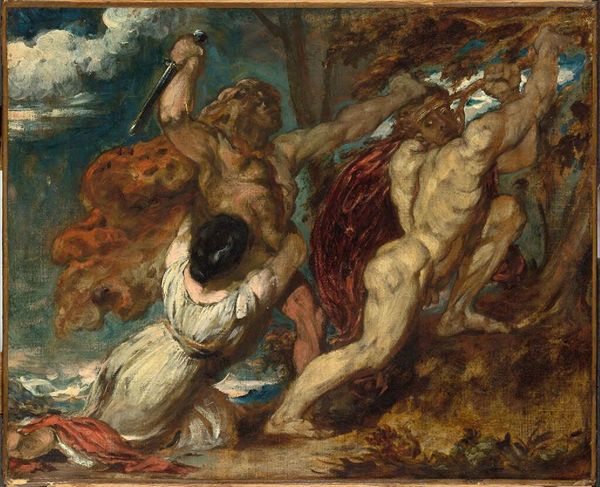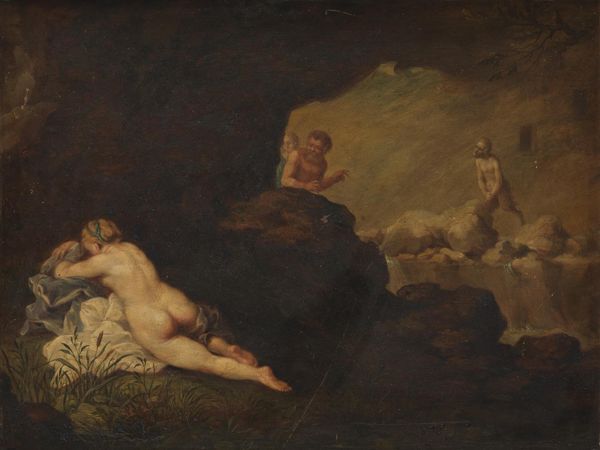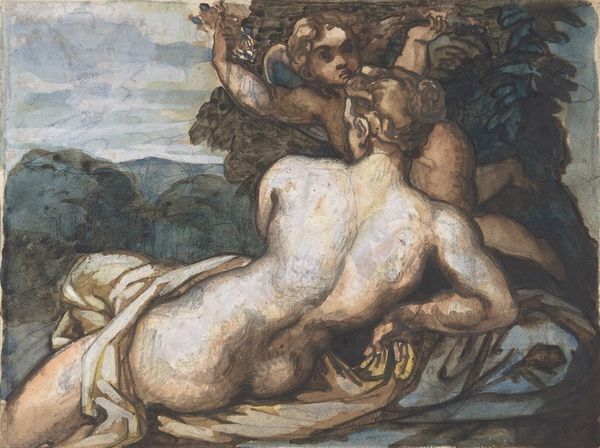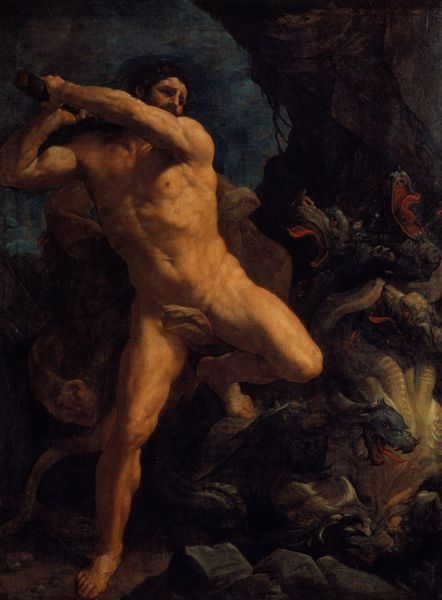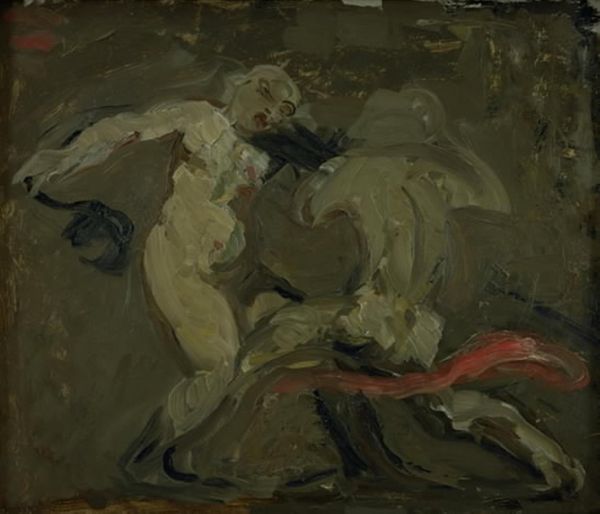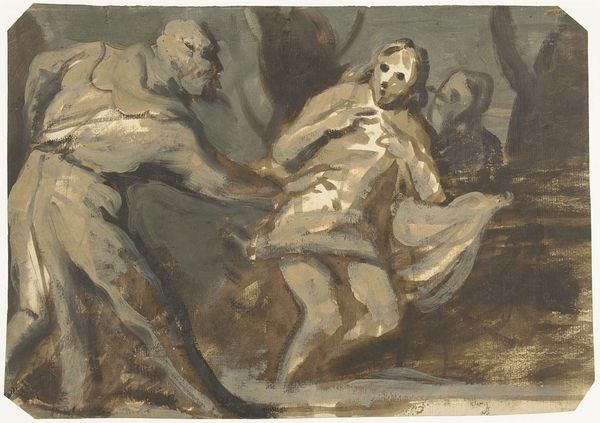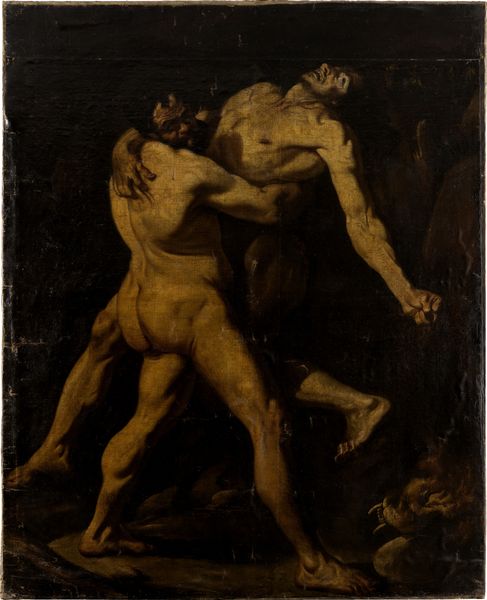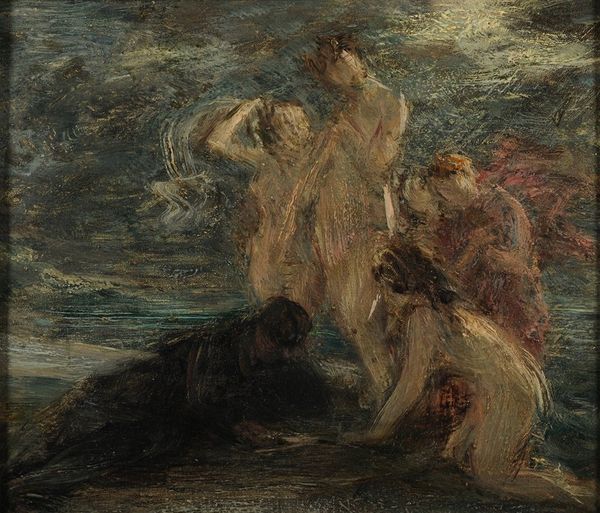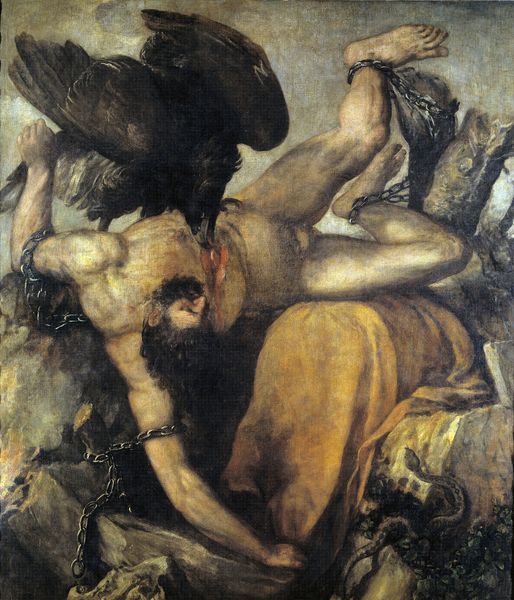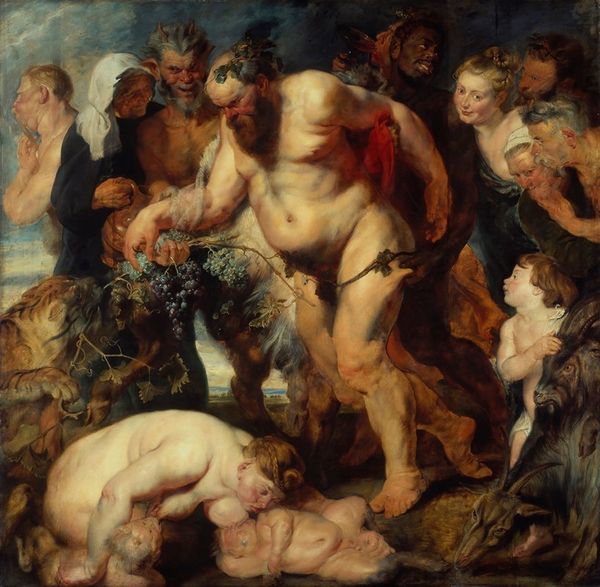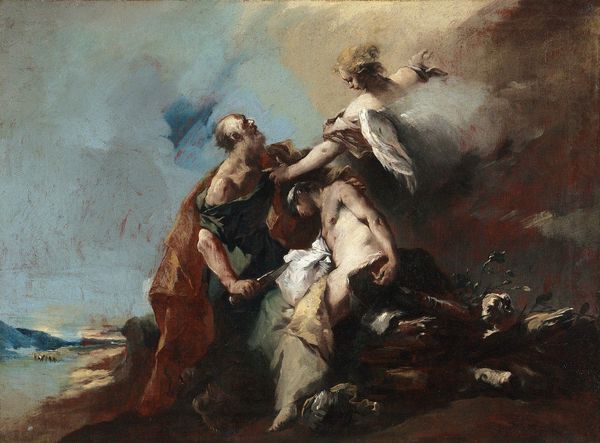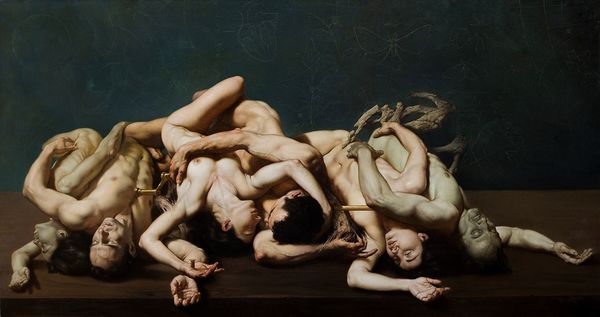
oil-paint
#
abstract painting
#
oil-paint
#
figuration
#
oil painting
#
expressionism
#
history-painting
#
expressionist
Dimensions: 93.5 cm (height) x 112 cm (width) (Netto)
Curator: Oluf Hartmann’s 1907 oil on canvas, “The Fight for the Corpse of Patroclus,” arrests the gaze immediately. What's your first impression? Editor: A struggle, clearly, and one rendered with remarkable tension. The color palette is limited, muted. I see bodies contorted, limbs grasping, but the narrative feels almost secondary to the raw emotion. Curator: Agreed. The earthy tones create a sense of weight and oppression, and observe how the composition—a tight, almost claustrophobic arrangement of figures—amplifies this effect. Notice the stark contrast between the pale, lifeless body of Patroclus and the more vibrant, shadowed forms of those battling for him. The artist is exploring tensions between stasis and kinesis, isn't he? Editor: Absolutely. It begs the question, who benefits from this fight over Patroclus's body? Hartmann, working in early 20th-century Denmark, painted this scene during a time of national and cultural anxiety. We might see the scramble for Patroclus as a symbol of the competition for national identity, particularly among rising nationalist movements in Europe at the time. What are they really fighting for? Honor? Land? Dominance? Curator: That's a fascinating reading! And if we consider Hartmann’s involvement with expressionism, these visual choices contribute to an overall sense of disquiet and internal turmoil. See how Hartmann doesn’t allow any individual element to exist autonomously; all of the parts function to emphasize an overall effect that transcends simple illustration. Editor: Furthermore, how do we understand the vulnerability inherent in Patroclus's naked body as it is pawed over and dragged through the mud? We are reminded of the fallen everyman of WWI--stripped of agency. Is this less a painting about heroic victory than a comment on the trauma of combat? Curator: Precisely, it’s about the dehumanizing nature of conflict! He even foresees a reality of war far removed from glory. It is an outstanding work of form and historical allegory. Editor: I think considering its expressionist qualities with the undercurrent of burgeoning political violence elevates its status among other history paintings.
Comments
No comments
Be the first to comment and join the conversation on the ultimate creative platform.
